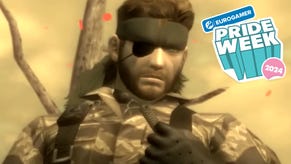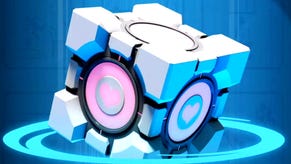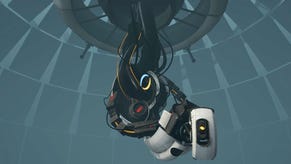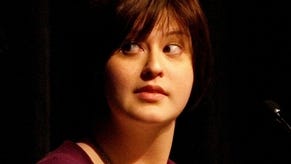Watch Valve's HTC Vive VR Rezzed developer session
"The future is finally here."
Valve's Chet Faliszek took to the stage at EGX Rezzed to deliver a talk on the HTC Vive, the company's virtual reality offering.

Faliszek spoke of his initial dismissal of VR technology, even of Valve's own technology that began life in 2012. It had given him headaches and motion sickness, Faliszek said.
"I personally dismissed it so much, I would go down to the VR team and I would mock them and give them crap," he said.
But then a demo of the latest version of Valve's hardware changed his mind.
"One day they told me, come in and see the new demo. See what we're working on. See the hardware and where it's at now. That changed everything for me.
"The next day, as is Valve tradition, I rolled my desk down and I joined the VR team."
Valve has partnered with Taiwanese smartphone and tablet maker HTC to make its virtual reality headset, due out later this year.
The Vive features a 1200 x 1080 pixel screen in front of each eye, with a refresh rate of 90 frames per second. Also included is a gyrosensor, accelerometer, and laser position sensor that combines to track the rotation of your head on both axes to an accuracy of 1/10th of a degree.
You can couple the headset with a pair of SteamVR base stations to track your physical location in spaces up to 15 feet by 15 feet. So, you'll be able to get up and walk around inside Half-Life - virtually. There's an audio jack on the side of the headset, into which you can plug headphones.
Elsewhere, you can use VR game controllers in each hand to virtually use objects and interact with the virtual world. (Digital Foundry checked out HTC Vive at GDC recently.)
Faliszek said many people have a preconceived notion of what virtual reality is, based on movies and television show science fiction, that was misleading. The reality of virtual reality, Valve has found, is much different.
"They've seen Star Trek and the Holodeck, and they want to run around and play a current FPS," he said.
"That's where we started. We ported Team Fortress 2 over. It turns out, that's actually a bad game for VR.
"VR scales more like real life. Things aren't just flying at you all the time. That ends up being not a limitation, but something special. It's a new opportunity for us. But there's so little we know.
"Movies have Tom Cruise holding up his arms for four hours. Go ahead and do that. We call that gorilla arms. We just can't do that. But movies have this odd implementation of what they think the world's going to be like in VR."
You can watch the talk in full in the video, below.










